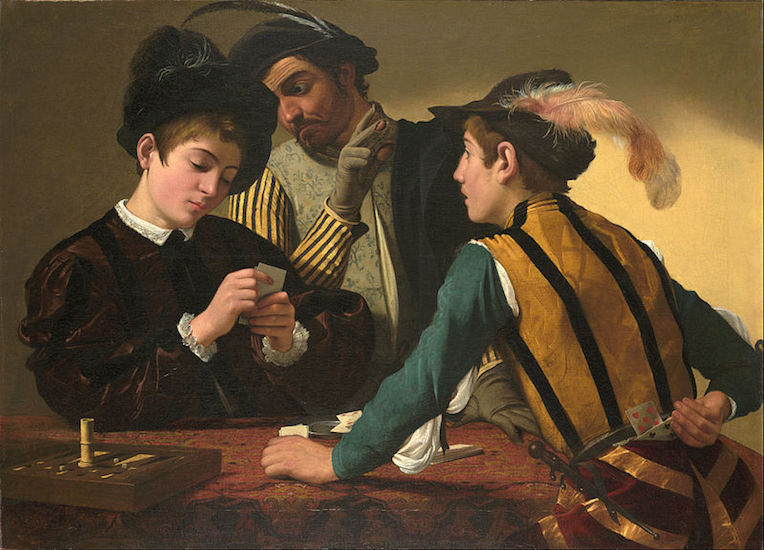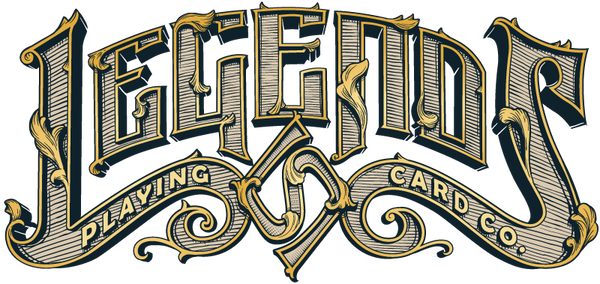
Famous Card Players in Literature
Card games have been around since the dawn of time, filling the pages of great novels for as long as people have put pen to paper.
Even as far back as William Shakespeare, we saw references to card games. In his 16th century work Two Gentlemen of Verona, there is mention of a game called Noddy, an early card game and one of the first mentions of such pastimes in popular literature. Since then, there have been numerous characters who have enjoyed a hand of cards.
There’s a good reason for this; cards are a great way to advance a plot. You only have to look at cards in other areas of pop culture to see why they work well as a plot device. We examine this in our article ‘Playing Cards in Pop Culture’, as there are so many examples. Think of Ocean’s XI, for instance. It is a heist movie, but how is one of the main characters introduced? Hustling at a card game, which gives us an insight into his personality. It is a classic example of playing cards being used as a character-building mechanic. Legends decks have been in some movies as well, such as the Liam Neeson movie called Window and another one coming up. Also, some other companies like Theory 11 have had decks in movies like Now You See Me, the magician thriller starring Jesse Eisenberg and Isla Fisher.
Whilst we might see Legends decks on-screen in today’s culture, they wouldn't have been so obvious had they appeared in literature. However, card games are evident in literature through the ages. Here, we select some card players from literature you might be well aware of.
George Milton – Of Mice and Men
Of Mice and Men was published in 1937 and tells the story of George Milton and Lennie Small, two displaced migrant ranch workers, transients who travel California in search of work during the Great Depression. It almost didn’t get published at all; Gala Bingo claims that John Steinbeck’s dog, Toby, ate the original manuscript! If he hadn’t been able to put pen to paper once more, the world would never have seen Milton playing solitaire. It was an important plot device as it demonstrated Milton was a lonely, isolated man, playing a solitary game. Steinbeck might have been the same, having to rewrite much of his novel.
Pip – Great Expectations
Pip is one of the most popular figures from the works of Charles Dickens, and his journey through life, along with the deterioration of his emotional and moral state, is a wonderful insight into Victorian England. In the early part of the book, a young Pip is invited to play cards with the rich Miss Havisham. Estella mocks him during play, saying, “He calls the knaves Jacks, this boy!” Great Expectations was Dickens’ 13th novel, according to Literariness, and is described as one of ‘the most admired and most discussed’.
Oscar Hopkins - Oscar and Lucinda
Peter Carey’s 1988 novel Oscar and Lucinda sees the protagonists of the book’s title going head to head in a poker game for penny bets. Set in the 19th century, it tells the story of their journey from the UK to Australia. They discover they have a shared love of card games, one obsessive, the other compulsive. The book was later made into a film starring Cate Blanchett and Ralph Fiennes.
Lily Bart - The House of Mirth
The 1905 Edith Wharton novel tells the story of Lily Bart’s life in the high society in New York City at the end of the 19th century. Lily is a compulsive card player, and she regularly plays bridge for high stakes. Lily loses the game, seeing rival Judy Trenor walk away from a Bellomont house part with a handful of bills she didn’t need. It starts a tale of tragedy for Lily and acts as a pivotal moment in the book.
Article authored by Robbie Jeanne
Exclusively written for www.legendsplayingcards.com
